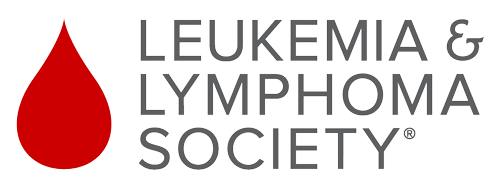I’m a CLL patient and my question relates to CRISPR, the gene editing tool. How soon with this become a reality in the treatment of leukemia and other blood cancers?
- by Barry G
from USA
Transcript:
Barry G: Hi, my name is Barry Goodman. I’m a CLL (Chronic Lymphocytic Leukemia) patient, and I’ve been reading the past few years about CRISPR, the gene editing tool, and I’m wondering how soon it might become a reality that might be an effective tool in the treatment of leukemia and other blood cancers. Thanks very much.
Lee Greenberger: Hi, Barry. This is Lee Greenberger. I’m the Chief Scientific Officer (CSO) of The Leukemia & Lymphoma Society (LLS). I’ve been with the Society for 10 years and have actually seen genetic therapy and, in particular, CRISPR added into the experimental condition for blood cancers.
Let me tell you where CRISPR is and a little bit of history of CRISPR technology. So. this is a Nobel Prize winning technology in which the genes which control a disease, or a body function can be altered such that if there’s a mistake in the genome of mutation, it can be easily corrected with CRISPR. It’s not perfect, but it’s actually pretty good at correcting that mutation and that mutation only.
Okay. So, technology could create one small change in a cell. Now the technology has been used to treat sickle cell disease (SCD) and a few other diseases, and the reason why it’s being done is, of course, sickle cell disease is an incurable disease. And in sickle cell there’s one small mutation in the genes that encode an important protein in red blood cells such the red blood cells become, instead of old they become sickle cell and they get sort of trapped in capillaries while the CRISPR technology has been used to alter the expression of a certain gene that will make the cells go back to their rounded shape, if you will, and that’s been an experimental therapy with very promising results. Okay. So that’s sickle cell disease, not a blood cancer but a blood disease.
The technology has also been used now to alter the function of T cells. These are immune cells. Now the reason why T cells are important is because T cells can be directed to kill tumors. How does this work? What you do is you take the T cells out of the patient, you genetically engineer them to put a homing device on the T cells to recognize the tumor cell, put that T cell back into the patient, and it will kill the tumor. That’s what T cells do; they kill tumors or can kill multiple cells. So, these T cells now specifically they’re killing tumors.
Well, that’s good news and it’s been an approved therapy for many different blood cancer diseases, including follicular lymphoma (FL), diffuse large B-cell lymphoma (DLBCL), multiple myeloma (MM). And there’s been also experiments that have shown, many years ago actually, that it can be used as a treatment for chronic lymphocytic leukemia; your disease, CLL. And while it’s not approved for CLL, there are ongoing studies to use this so-called CAR T therapy, that’s chimeric antigen receptor T-cell therapy, T cells engineered and put them back into the patients to kill the tumors.
It’s highly effective with certain patients. About 50% of the patients will have long-term disease control. And now after 10 years with this CAR T therapy, we could say that certain patients are actually cured; can’t find the disease, off therapy, cured. It’s an unbelievably powerful therapy, particularly for patients who have relapsed refractory disease and have exhausted all other options.
Okay, now the CRISPR part. Well, it turns out that the CRISPR CAR T technology is not effective for all diseases and so how do we make it more effective? And the way this is done is to use the CRISPR technology to enhance the ability of these CAR T cells to kill tumors.
And, in particular, LLS, The Leukemia & Lymphoma Society, is funding one company called the Caribou Therapeutics (Caribou Biosciences(R)). And what Caribou has done, this is a company that has been founded by Jennifer Doudna, the actual woman who won the Nobel Prize for this technology. What the company has done is to use the CRISPR technology to turn off the genes that will cause the T cells to be exhausted. When T cells become exhausted, they don’t work, and they don’t kill tumors. So, by turning off this gene now the T cells can remain active. That’s the concept.
So how does this work? The T cells come out of the patient. They go to a laboratory that CRISPR technology runs. They make the CAR T cells home on the tumor cells. And then they use CRISPR technology to knock out the gene that would normally exhaust the T cells and those cells are now put back into the patient. While we don’t know if the cells are going to be better, yet we do know that this CRISPR technology has been used and patients are responding well to the therapy.
So, what’s the hope? The hope is that we go from a 50% long-term disease control to a 70 or 90% long-term disease control in these patients who have blood cancers.
So, the technology has been used in blood cancers, it’s been used in cardiovascular disease. These are experimental therapies at this point, but I think we’re going to see CRISPR technology get approved in the very near future, certainly for sickle cell disease, and I don’t think the blood cancers are going to be very far behind it. So, thank you for asking that question.


